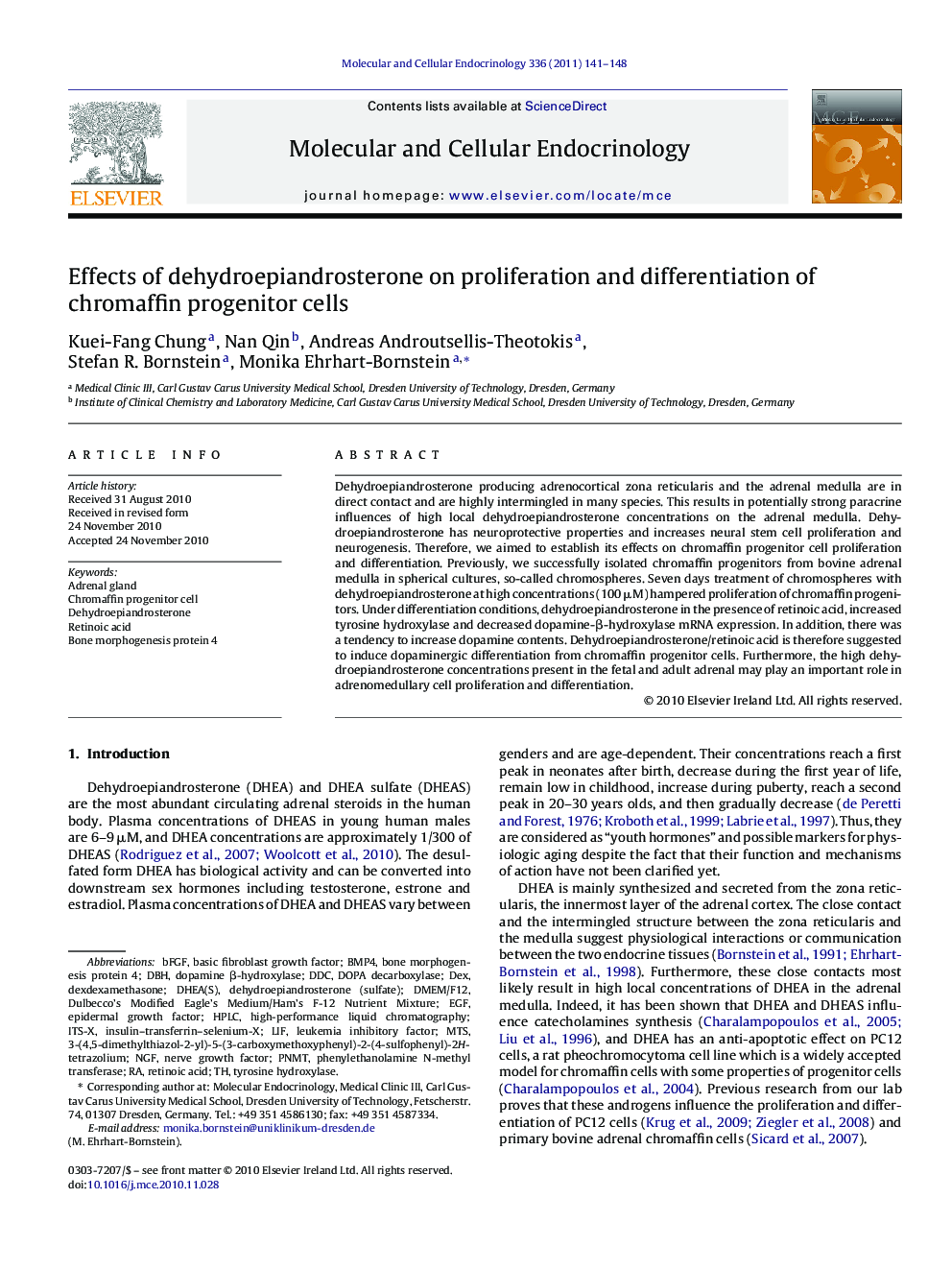| Article ID | Journal | Published Year | Pages | File Type |
|---|---|---|---|---|
| 8477917 | Molecular and Cellular Endocrinology | 2011 | 8 Pages |
Abstract
Dehydroepiandrosterone producing adrenocortical zona reticularis and the adrenal medulla are in direct contact and are highly intermingled in many species. This results in potentially strong paracrine influences of high local dehydroepiandrosterone concentrations on the adrenal medulla. Dehydroepiandrosterone has neuroprotective properties and increases neural stem cell proliferation and neurogenesis. Therefore, we aimed to establish its effects on chromaffin progenitor cell proliferation and differentiation. Previously, we successfully isolated chromaffin progenitors from bovine adrenal medulla in spherical cultures, so-called chromospheres. Seven days treatment of chromospheres with dehydroepiandrosterone at high concentrations (100 μM) hampered proliferation of chromaffin progenitors. Under differentiation conditions, dehydroepiandrosterone in the presence of retinoic acid, increased tyrosine hydroxylase and decreased dopamine-β-hydroxylase mRNA expression. In addition, there was a tendency to increase dopamine contents. Dehydroepiandrosterone/retinoic acid is therefore suggested to induce dopaminergic differentiation from chromaffin progenitor cells. Furthermore, the high dehydroepiandrosterone concentrations present in the fetal and adult adrenal may play an important role in adrenomedullary cell proliferation and differentiation.
Keywords
BMP4DHEA(S)phenylethanolamine N-methyl transferaseLIFPNMTEGFNGFdehydroepiandrosteroneMTSDEXbFGFDBH3-(4,5-dimethylthiazol-2-yl)-5-(3-carboxymethoxyphenyl)-2-(4-sulfophenyl)-2H-tetrazoliumddCDMEM/F12dopa decarboxylasetyrosine hydroxylasedopamine β-hydroxylaseRetinoic acidepidermal growth factorleukemia inhibitory factorAdrenal glandnerve growth factorbasic fibroblast growth factorHPLChigh-performance liquid chromatography
Related Topics
Life Sciences
Biochemistry, Genetics and Molecular Biology
Cell Biology
Authors
Kuei-Fang Chung, Nan Qin, Andreas Androutsellis-Theotokis, Stefan R. Bornstein, Monika Ehrhart-Bornstein,
